Last week, North East naturalists and the Bumblebee Conservation Trust set out in search of bees at Prudhoe Riverside. Charlotte Rankin takes a look back at what they discovered.
Undeterred by the thunderstorm forecast, a group of naturalists set out in search of bees at Prudhoe Riverside in Northumberland last Saturday. Led by Richard Comont, Science Manager at the Bumblebee Conservation Trust, the aim was to identify bumblebees of the riverside meadows and chalky Spetchells hills. Despite the forecast, the rain thankfully held off until the final fifteen minutes and six species of bumblebees were observed.
Bumblebees
Meeting at the riverside car park, the first bee stop was at a garden plant border by Ovingham Bridge. Packed with donated plants from local residents, the pollinator-friendly plants are enjoyed by a diverse range of bees and other flower-visiting insects. The garden plant border soon ticked off four of the seven common bumblebee species: Buff-tailed, Common Carder, Garden and Tree Bumblebee. The planted Lamb’s-ear even supports the Wool Carder Bee, a rarer solitary bee in the region with few and scattered records. While just a glimpse, a lone male Wool Carder Bee was observed here on Saturday’s walk.
The first bumblebee of the day was a male Tree Bumblebee. First recorded in Northumberland in 2007, the Tree Bumblebee is now one of the most common bumblebees in the region. To recognise this bumblebee species, Richard gave a handy ID tip: “Its pattern is like Neapolitan ice cream with three different colours: Ginger thorax, black abdomen and a white tail.”
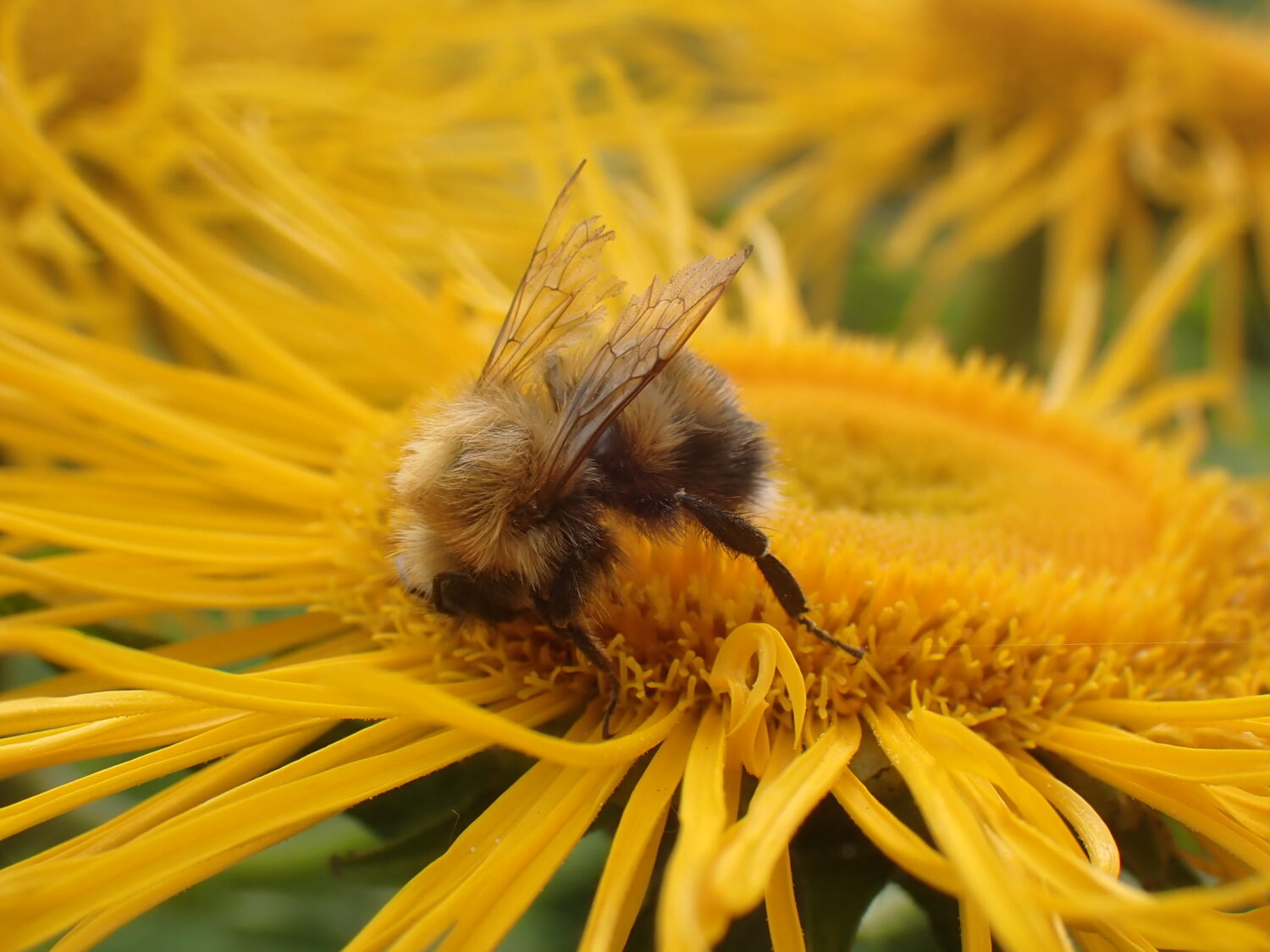
Male Tree Bumblebee © Charlotte Rankin 
The garden flower border by Ovingham Bridge
On the Spetchells, Bird’s-foot Trefoil, Ox-eye Daisy and Musk Thistle were the go-to plants for bumblebees. Marjoram was not quite in flower, but over the next few weeks, will be in full bloom on the hills and attracting many bees. A particular highlight while on the hills was a sighting of the Vestal Cuckoo Bee, a scarcer bumblebee in the region. A species of cuckoo bumblebee, females take over the nests of Buff-tailed Bumblebees. While a bit trickier to identify, Richard went through the key ID features of cuckoo bumblebees to look out for. All six cuckoo bumblebees are found in the North East and two species have been recorded at the Spetchells. The Red-tailed Cuckoo Bee, also found on the Spetchells, is a target bee species of the North East Bee Hunt.
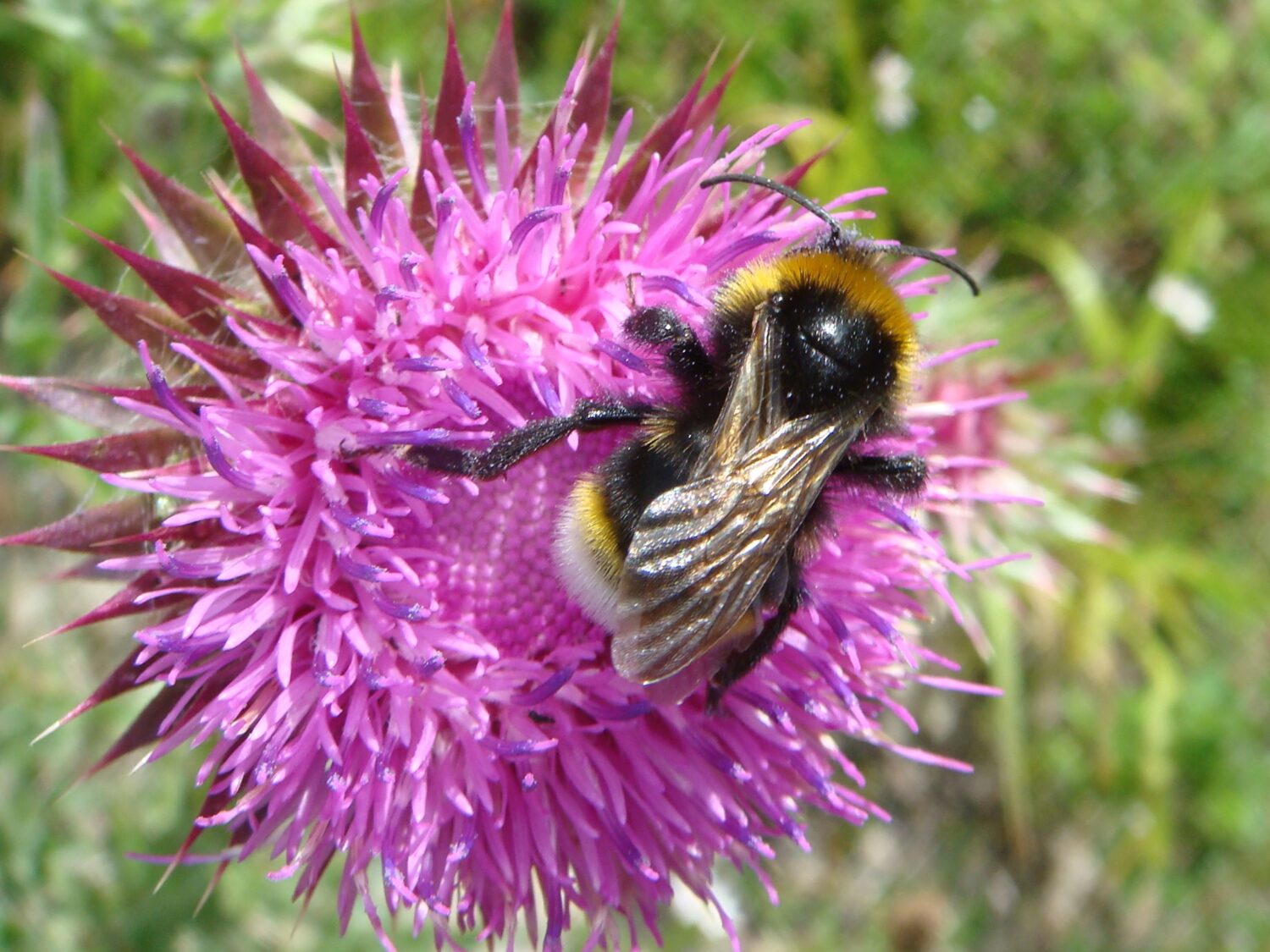
Male Vestal Cuckoo Bee on Musk Thistle © Louise Hislop
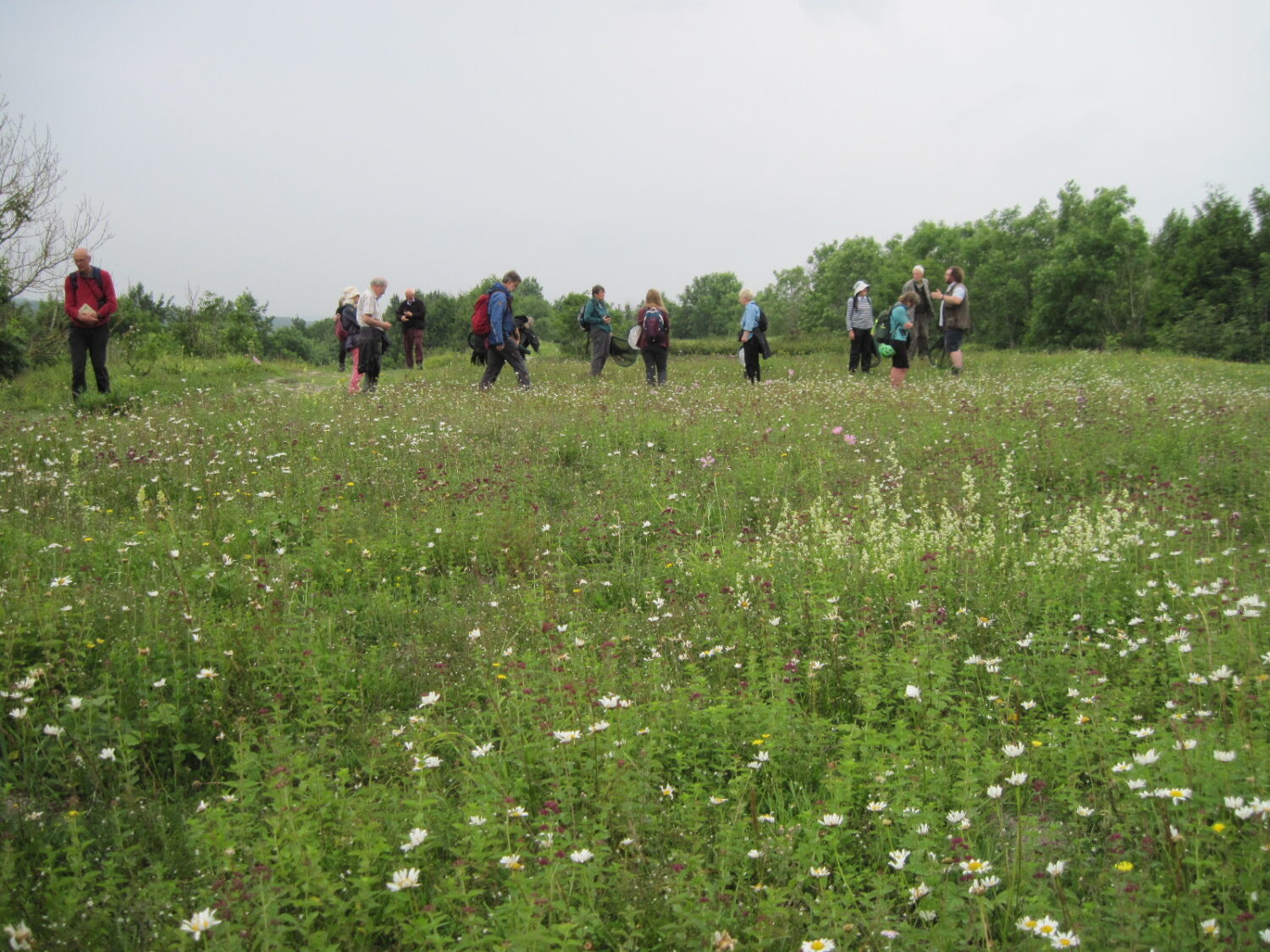
Looking for bees on the Spetchells © Louise Hislop
Solitary Bees
While bumblebees were the focus of the walk, solitary bees made a welcome appearance too. Although the peak activity of spring mining bees on the hills had passed, the group were lucky to encounter foraging Buffish Mining Bees on Hogweed along the riverside meadows. On the chalky Spetchells, a female Ashy Mining Bee was also observed returning to her burrow.
Elsewhere on the Spetchells, a Yellow-face Bee was found feeding on Wild Mignonette, a favourite plant of the smaller solitary bees here on the Spetchells. Local naturalist, Louise Hislop, also identified a new mining bee for the Spetchells, the Grey-banded Mining Bee (Andrena denticulata).
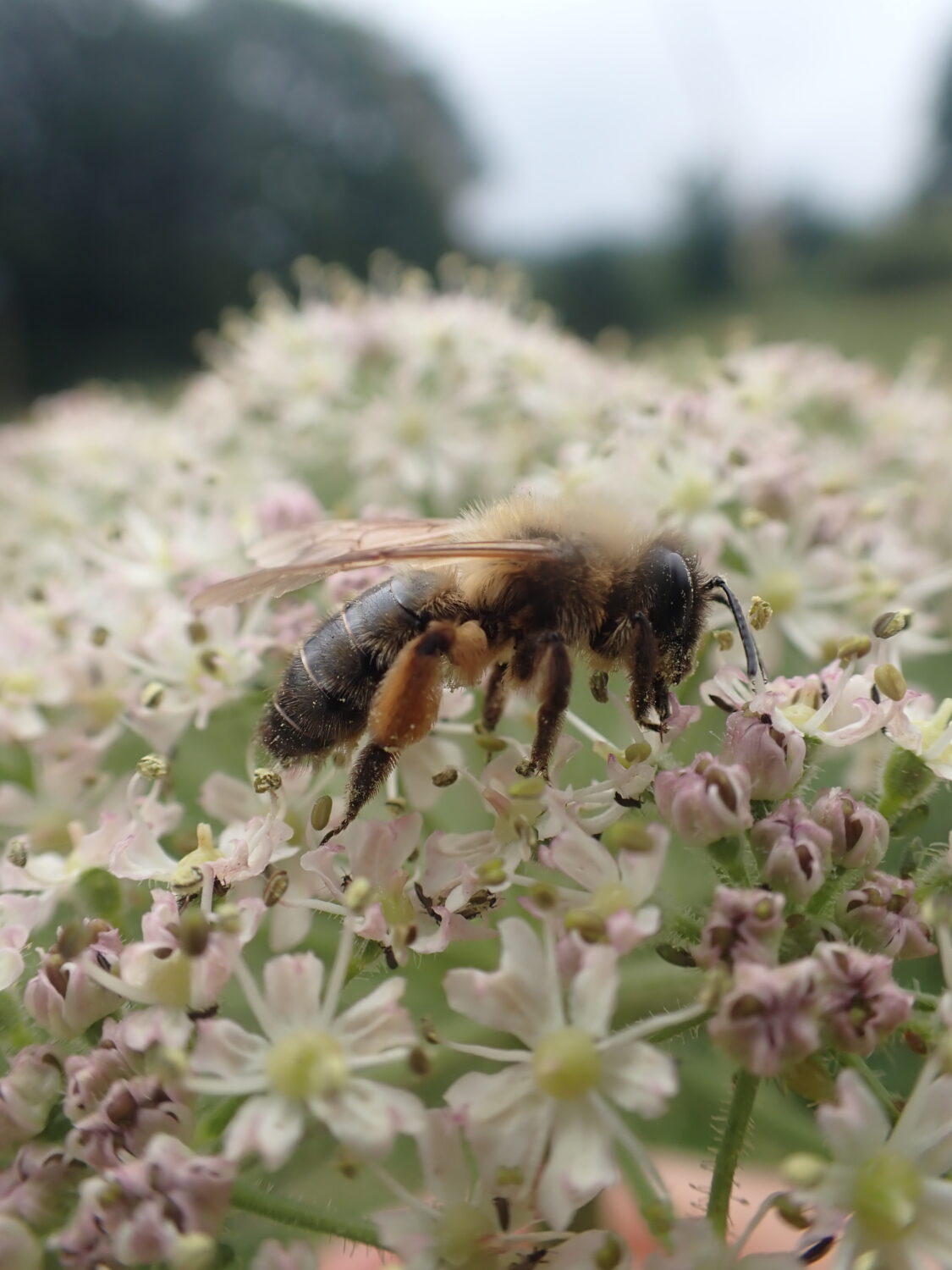
Buffish Mining Bee on Hogweed along the riverside meadows 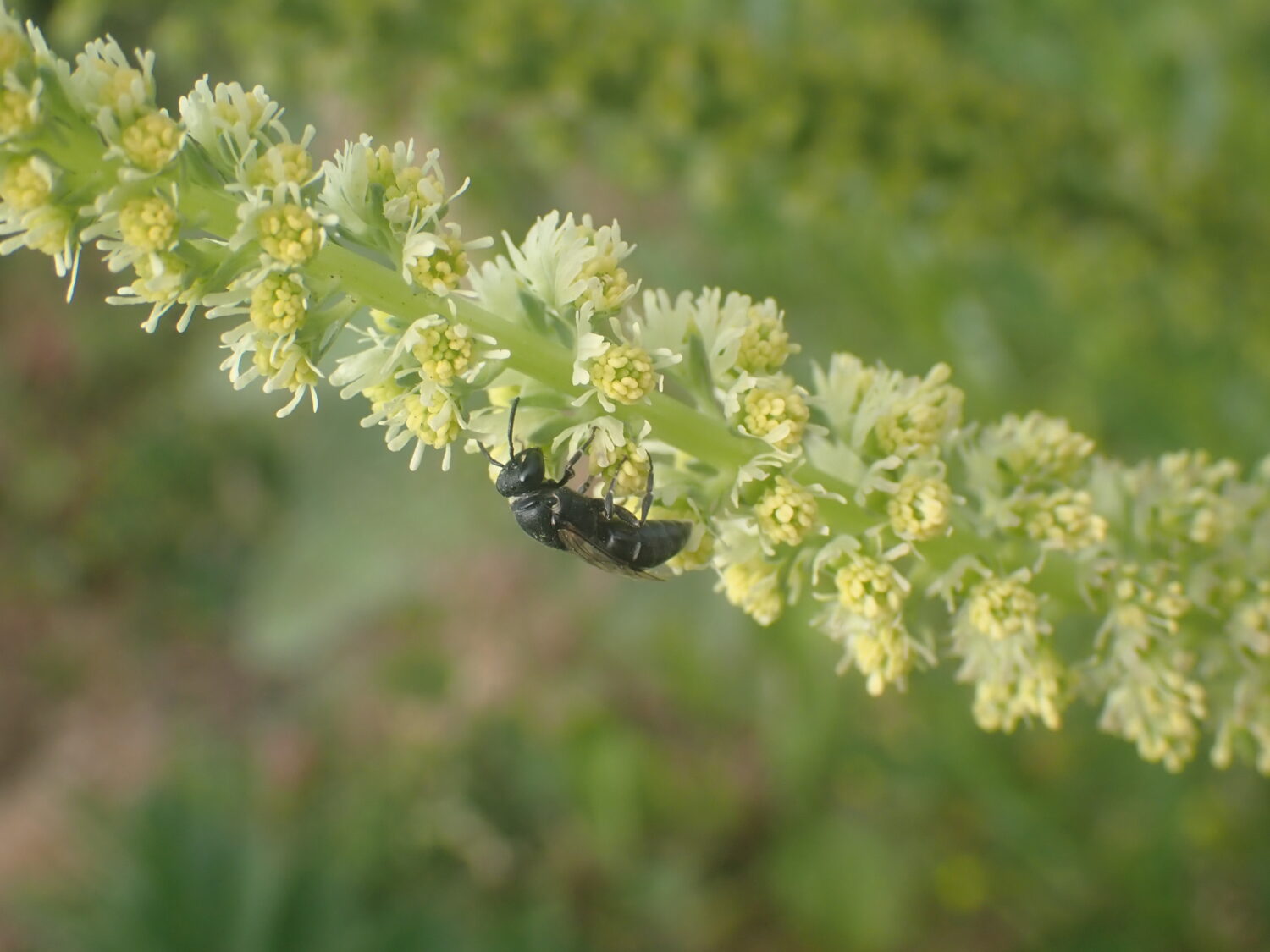
Smaller solitary bees, such as Yellow-face Bees, forage on Wild Mignonette
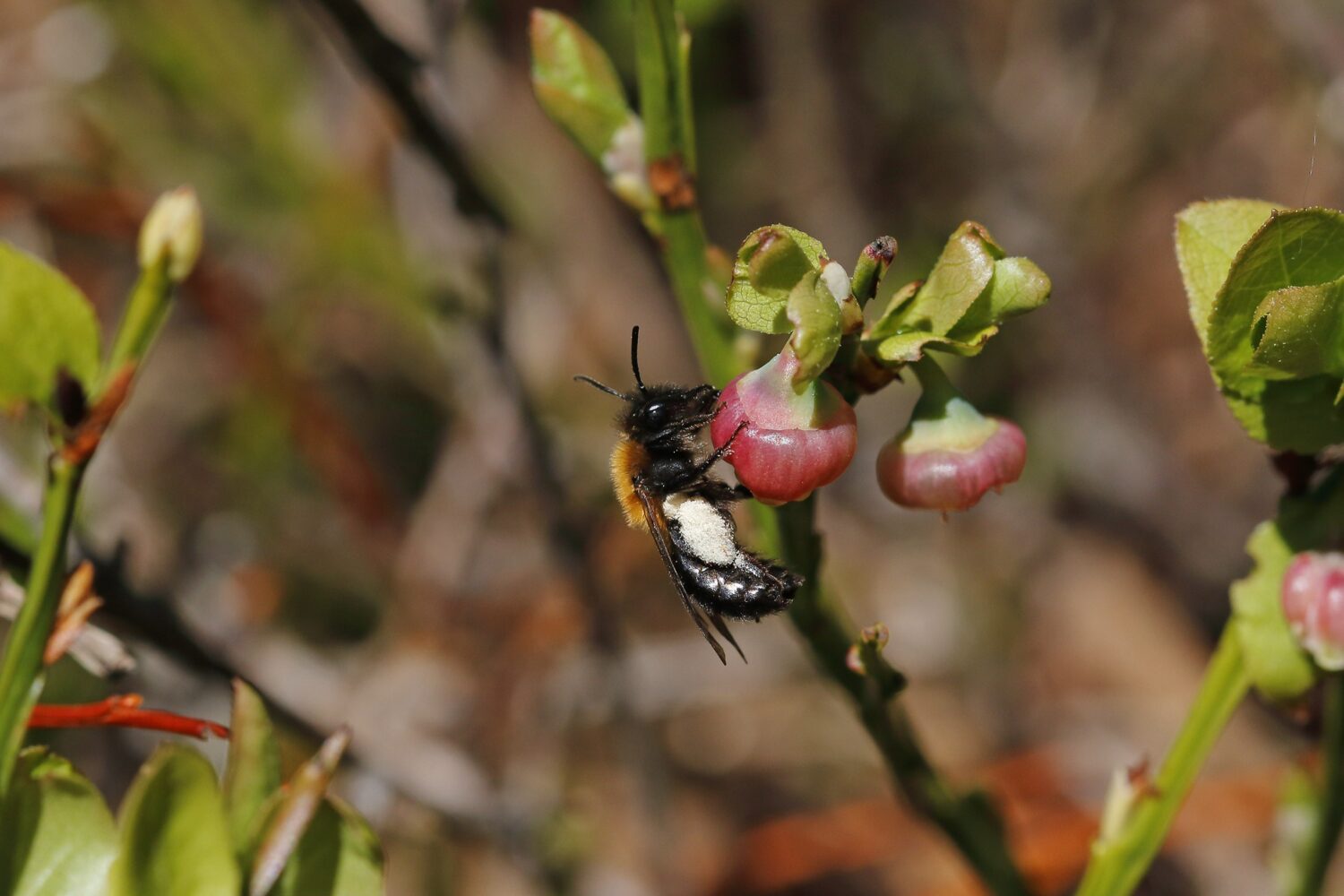
Join the North East Bee Hunt
Urban or rural, beginner or expert, we need your help to record eight distinctive bees across the North East this spring and summer.
Your records can add to our understanding of bees in the region and inform conservation and monitoring efforts.
Taking part is easy and every record counts, wherever you live in the region. Records of all bee species are encouraged.
